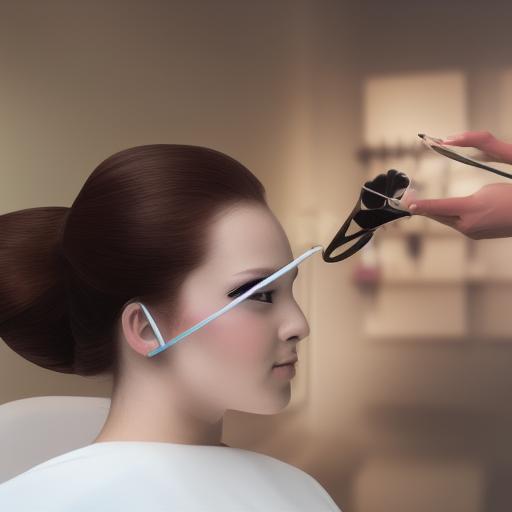
The beauty industry is booming, and for salon owners, scaling their business is a key to success and sustained growth. But scaling isn’t just about adding more chairs and stylists; it’s about optimizing every aspect of your operations for efficiency and profitability. This is where technology steps in as your secret weapon. This comprehensive guide explores how to leverage technology to effectively scale your beauty salon, addressing the what, why, when, and how of technological integration for maximum impact.
I. Why Technology is Crucial for Scaling Your Beauty Salon
In today’s fast-paced world, customers expect seamless experiences. Manual processes and outdated systems can hinder growth, leading to lost bookings, scheduling conflicts, unhappy clients, and ultimately, lost revenue. Technology allows you to:
- Increase Efficiency: Automate repetitive tasks, freeing up your time and staff to focus on client services and building relationships.
- Enhance Customer Experience: Provide convenient booking options, personalized communication, and streamlined check-in/check-out processes.
- Improve Team Management: Track employee performance, manage schedules effectively, and streamline communication within your team.
- Boost Revenue: Optimize pricing, track sales data, and identify opportunities for upselling and cross-selling.
- Gain Competitive Advantage: Stand out from competitors by offering innovative services and a superior customer experience through technology.
- Reduce Operational Costs: Minimize manual errors, reduce paperwork, and optimize resource allocation.
- Gather Valuable Data: Track key metrics to understand your business performance and make data-driven decisions.
II. Key Technologies to Integrate into Your Beauty Salon
Several technologies can significantly benefit your beauty salon’s growth. Let’s explore some key players:
A. Online Booking and Scheduling Systems:
This is arguably the most impactful technology for scaling. Online booking systems allow clients to book appointments 24/7, eliminating phone tag and reducing administrative burden. Popular options include:
- Square Appointments: User-friendly interface with integrated payment processing.
- Acuity Scheduling: Powerful features for managing multiple services, staff, and locations.
- Schedulicity: Offers robust reporting and marketing tools.
- Fresha: A comprehensive platform with POS features and client management capabilities.
Choosing the right system: Consider your salon’s size, the number of services offered, and your budget. Many offer free trials, allowing you to test before committing.
B. Customer Relationship Management (CRM) Software:
A CRM system centralizes client information, including appointment history, contact details, purchase history, and notes. This allows for personalized communication and targeted marketing efforts. Examples include:
- SalonBiz: Designed specifically for salons, offering client management, appointment scheduling, and marketing tools.
- Mindbody: A comprehensive platform for managing various business aspects, including client management, scheduling, and staff management.
- Zoho CRM: A versatile platform adaptable for various industries, including beauty salons.
Effective CRM usage: Regularly update client information, segment your client base for targeted marketing, and personalize communication to nurture relationships.
C. Point of Sale (POS) Systems:
A modern POS system streamlines the checkout process, manages payments, tracks inventory, and generates sales reports. Integrated POS systems often connect with online booking and CRM systems for a seamless workflow. Consider options like:
- Square POS: User-friendly and affordable, with integrated payment processing.
- Shopify POS: Ideal for salons with online stores, offering omnichannel capabilities.
- Lightspeed Retail: A robust POS system for larger businesses with advanced features.
D. Marketing Automation Tools:
Automated email marketing campaigns, social media scheduling, and targeted advertising can significantly increase client acquisition and retention. Tools like:
- Mailchimp: A popular email marketing platform with user-friendly features.
- Constant Contact: Offers email marketing, social media management, and website building tools.
- HubSpot: A comprehensive marketing automation platform with advanced features.
Strategic marketing: Segment your client base to deliver personalized messages, automate appointment reminders, and promote special offers.
E. Communication Platforms:
Efficient communication within your team and with clients is crucial. Consider using:
- Slack or Microsoft Teams: For internal team communication.
- WhatsApp Business or Facebook Messenger: For direct client communication and appointment reminders.
III. Implementing Technology Strategically: A Step-by-Step Guide
Assess Your Current Needs: Identify your salon’s pain points and areas for improvement. What processes are inefficient? Where are you losing time and money?
Research and Select Technologies: Compare different software options based on your needs, budget, and team’s technical capabilities. Read reviews and consider free trials.
Develop a Training Plan: Ensure your staff is adequately trained on using new technologies. Provide clear instructions, hands-on training, and ongoing support.
Integrate Systems: Seamless integration between different systems is crucial. Choose platforms that can communicate with each other or use integration tools.
Monitor and Analyze Data: Track key metrics to measure the effectiveness of your technology investments. Use data to identify areas for improvement and optimize your processes.
Stay Updated: Technology is constantly evolving. Stay informed about new tools and updates to ensure your salon remains competitive.
IV. Leveraging Data for Informed Decision-Making
The data generated by your various technology platforms is a goldmine of insights. Use it to:
- Analyze Sales Trends: Identify your most popular services, peak booking times, and seasonal trends.
- Track Client Acquisition Costs: Measure the effectiveness of your marketing campaigns and adjust your strategy accordingly.
- Monitor Employee Performance: Track key performance indicators (KPIs) such as client retention rates and average service times.
- Improve Service Offerings: Identify unmet client needs and develop new services based on demand.
V. Ensuring Data Security and Privacy
As you integrate technology, prioritize data security and client privacy. Comply with relevant data protection regulations (like GDPR or CCPA) and choose reputable vendors with robust security measures.
VI. Learn Business: Your Partner in Scaling Success
Scaling a beauty salon requires more than just technology; it needs strategic planning and informed decision-making. Learn Business (https://learn-business.org) provides invaluable resources and templates to guide you through every stage of growth. Their expertise in business planning, marketing, and financial management can significantly enhance your chances of success. They offer tailored guidance and templates specifically designed to help businesses like yours thrive. Consider exploring their resources to supplement your technological integration efforts.
VII. Case Studies: Real-World Examples of Technology’s Impact
- Salon A: By implementing an online booking system and CRM, Salon A reduced no-shows by 20% and increased repeat bookings by 15%.
- Salon B: Utilizing a POS system with inventory management, Salon B optimized stock levels, reducing waste and increasing profitability.
- Salon C: Through targeted email marketing, Salon C increased client acquisition by 30% and boosted sales of premium services.
VIII. The Future of Technology in Beauty Salons
The beauty industry is constantly evolving, and technology will continue to play a crucial role in shaping its future. Expect to see further advancements in:
- Artificial Intelligence (AI): AI-powered chatbots for customer service, personalized recommendations, and appointment scheduling.
- Augmented Reality (AR) and Virtual Reality (VR): AR applications for virtual makeovers and VR experiences for immersive salon visits.
- Mobile Applications: Dedicated mobile apps for booking, loyalty programs, and personalized client experiences.
IX. Conclusion:
Leveraging technology is no longer a luxury but a necessity for scaling your beauty salon successfully. By strategically integrating the right technologies and utilizing the data they generate, you can optimize operations, enhance the customer experience, and achieve significant growth. Remember to utilize resources like Learn Business to guide your strategic planning and ensure your technological advancements support your overall business goals. Embrace innovation, stay adaptable, and watch your beauty salon flourish.

Leave a Reply